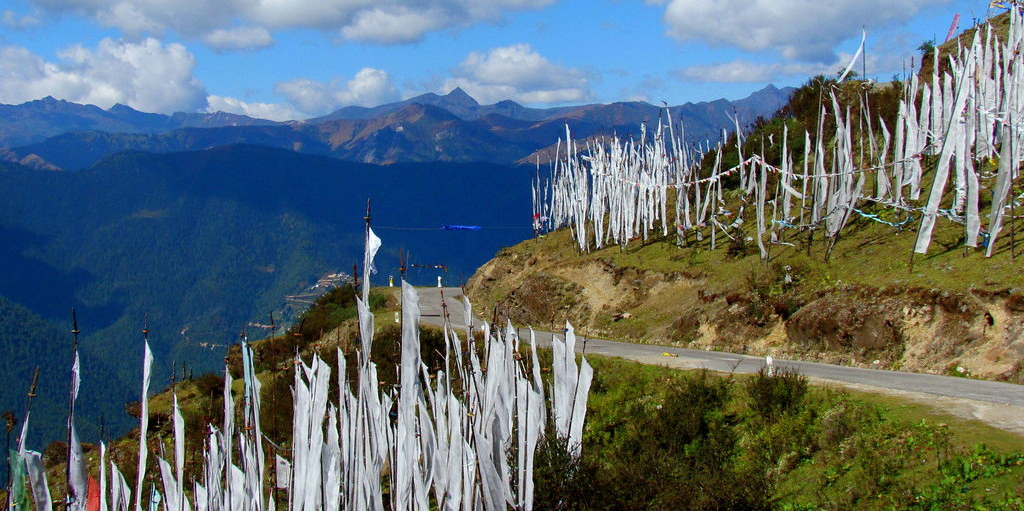Tiger's Nest Monastery
The Tiger's Nest Monastery, also known as Taktsang Monastery, is one of Bhutan’s most revered and breathtaking landmarks. This spectacular monastery clings to the side of a sheer cliff about 900 meters (almost 3,000 feet) above the Paro Valley floor. It is one of the most iconic images associated with Bhutan and a major pilgrimage destination for both locals and tourists.
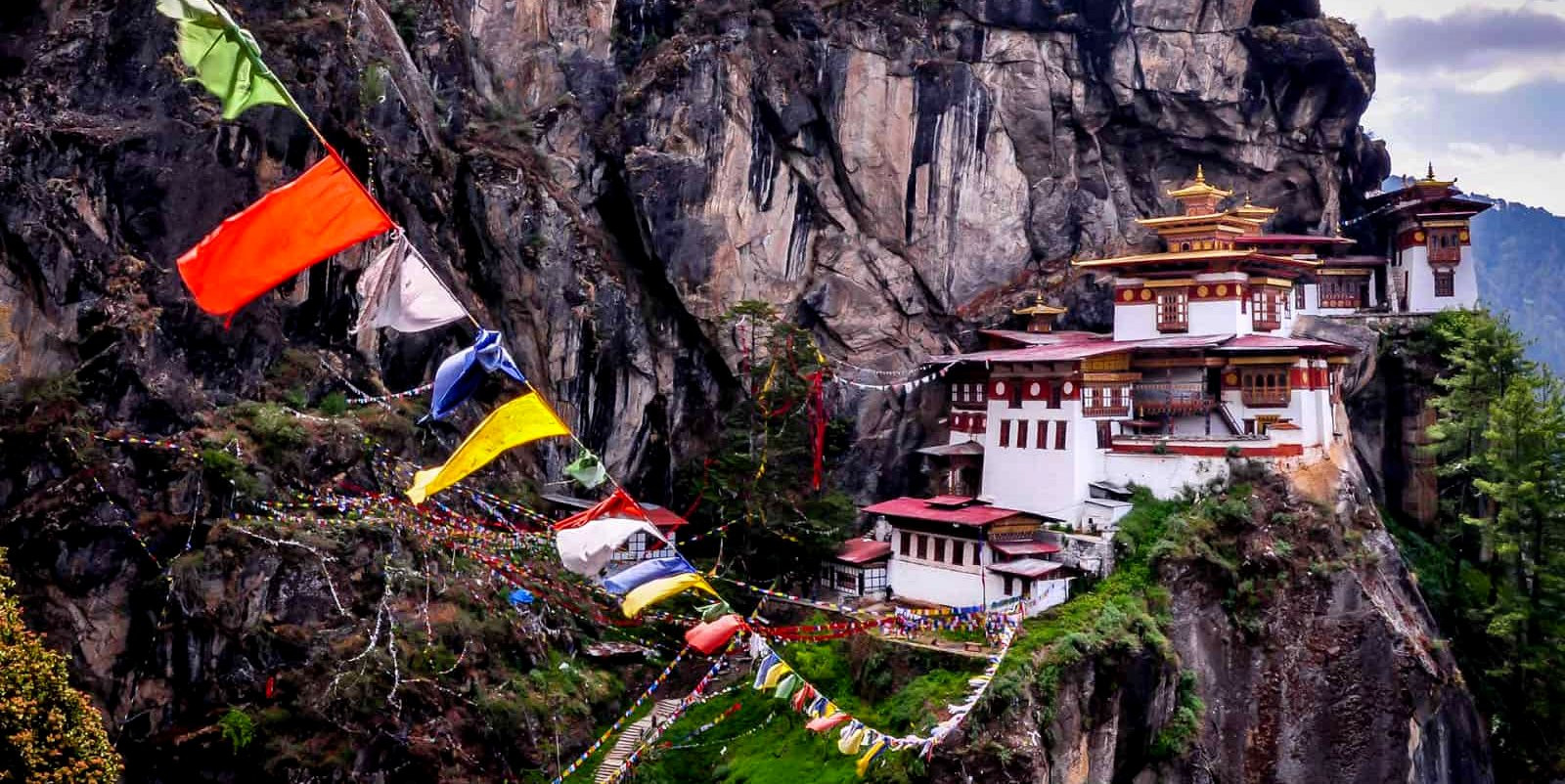
-
History and Legend: Taktsang Monastery's history dates back to the 8th century when Guru Padmasambhava, also known as Guru Rinpoche and credited with introducing Buddhism to Bhutan, is said to have flown to this location from Tibet on the back of a tigress. This miraculous journey is what gave the monastery its name, which translates to “Tiger’s Nest.” The Guru then meditated in a cave here for three months, and the site has been considered sacred ever since.
-
Architecture and Access: The monastery complex is built directly into the rock face and seems to defy gravity. It consists of four main temples and several other rooms. The buildings are interconnected by staircases with balconies that offer stunning views of the surrounding mountains and emerald forests. The interiors are adorned with numerous religious statues and beautiful paintings.
-
Significance and Experience: Visiting Taktsang Monastery is considered a spiritual journey, reflecting on the Buddhist virtues of meditation and contemplation. The peaceful ambiance and sacred nature of the site provide a profound sense of awe and spirituality that is unique to this holy place. It is not just a tourist attraction but a pilgrimage site where people come to seek blessings and meditate.
Whether you are interested in the spiritual, historical, or natural aspects, the Tiger's Nest Monastery remains one of the most mesmerizing sites in Bhutan, offering an unforgettable experience that combines cultural richness with natural beauty.
Rinpung Dzong
Rinpung Dzong, also known as Paro Dzong, is one of Bhutan's most impressive and well-known dzongs, serving both as a religious and administrative center. Located in Paro Valley, it is a prime example of Bhutanese architecture and one of the key historical sites in the region.
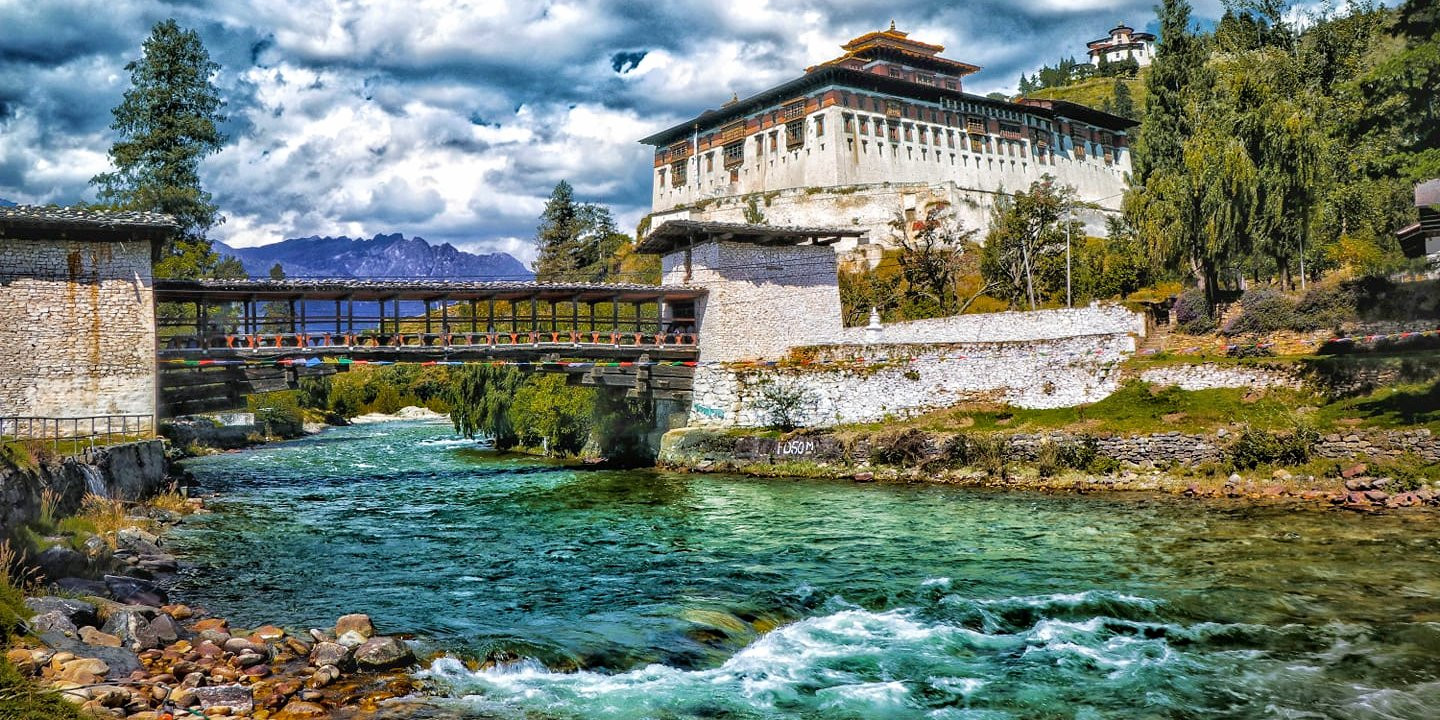
-
History and Significance: Rinpung Dzong translates to "Fortress on a Heap of Jewels." The fortress was originally a smaller structure built in 15th century by Lama Drung Drung Gyal, later expanded significantly by Ngawang Namgyal, the unifier of Bhutan, in the 17th century to serve as both a monastic and administrative center. This expansion was part of a wider effort to fortify and unify the country and establish a distinct Bhutanese cultural identity.
-
Architecture and Features: The architecture of Rinpung Dzong is a marvel, characterized by towering walls that slope inward, large courtyards, and beautiful galleries that showcase intricate woodwork and spiritual paintings. The dzong is constructed without the use of nails or architectural plans, following a traditional method where each piece of wood and stone is carefully fitted together..
-
Cultural Importance: Rinpung Dzong is perhaps best known for hosting the Paro Tshechu, a religious festival that takes place annually in the spring. This event draws thousands of locals and tourists who come to witness the colorful and dramatic mask dances performed by monks, which depict stories from Mahayana Buddhist tradition. The festival is not only a spiritual event but also a social gathering, where people from across the region come dressed in their finest traditional garments to celebrate their heritage and the teachings of Buddhism.
For visitors, Rinpung Dzong offers a profound glimpse into Bhutanese culture, history, and religion. The serene atmosphere, coupled with the architectural beauty and the panoramic views of the valley and surrounding mountains, makes it a must-visit site in Paro. Tourists can explore the dzong to appreciate its architectural intricacies and attend the Tshechu festival for an immersive cultural experience. Whether you're interested in architecture, history, or spirituality, Rinpung Dzong stands as a magnificent representation of Bhutan's rich heritage.
Paro National Museum
The Paro National Museum, officially known as the National Museum of Bhutan, is a cultural hub located in Paro, Bhutan. Housed in an ancient watchtower called Ta Dzong, the museum offers a panoramic view of the Paro valley and serves as a gateway to Bhutanese culture and history.
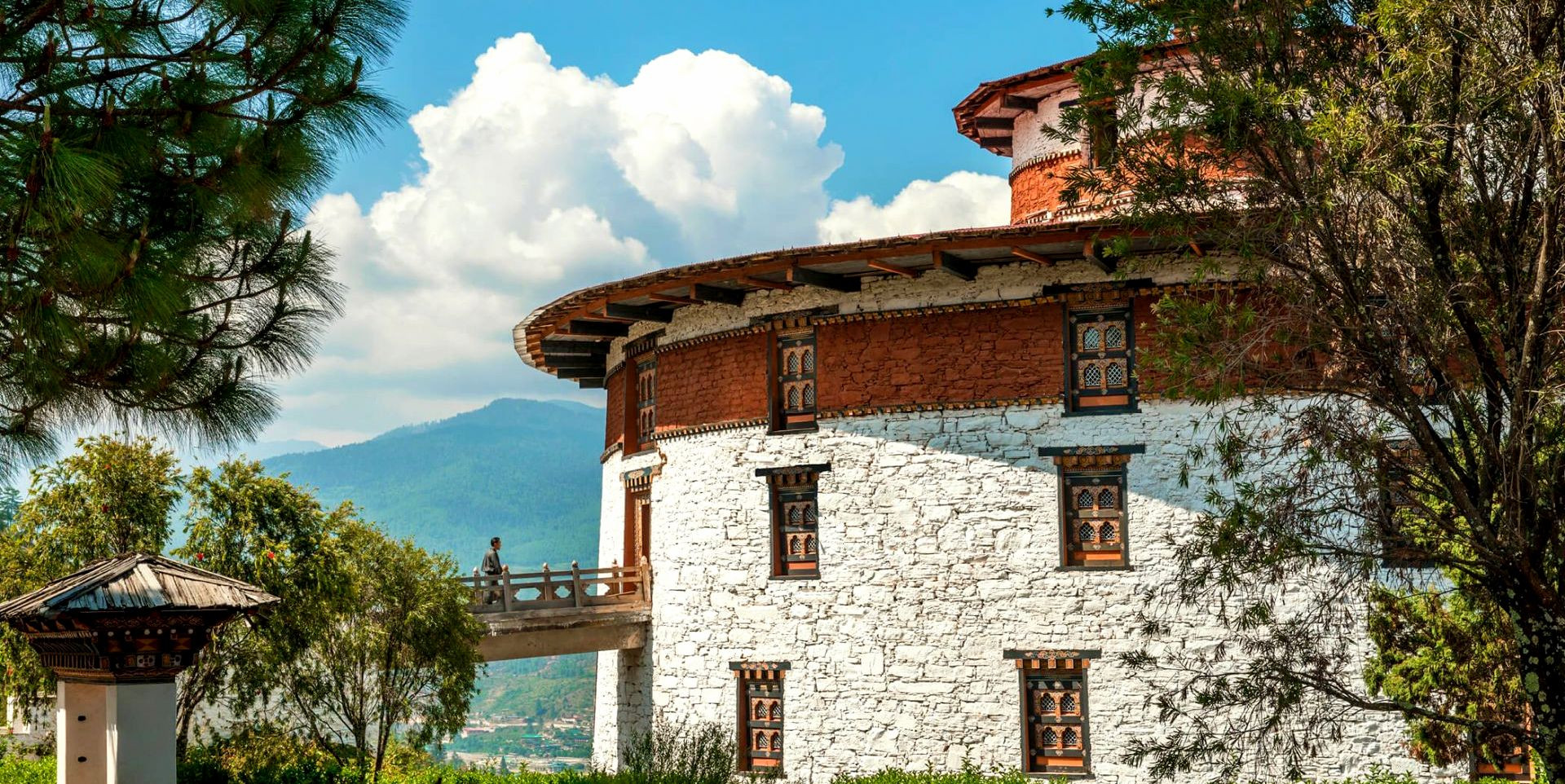
History and Restoration: Originally built in 1649 as a watchtower to defend Rinpung Dzong against Tibetan invasions, Ta Dzong was converted into the National Museum in 1968. The circular structure of the building, with its thick walls, is an excellent example of traditional Bhutanese architecture. The building underwent significant renovations after suffering damage from an earthquake in 2011, but it has since been restored and continues to attract visitors from all over the world.
Collections and Exhibits: The Paro National Museum houses some of Bhutan's finest artistic, cultural, and religious artifacts. Its extensive collections include over 3,000 works of Bhutanese art, including traditional costumes, armour, weaponry, and handcrafted implements from various regions and periods. These artifacts reflect more than 1,500 years of Bhutanese cultural heritage.
Significant exhibits include
-
Thangkas: Religious paintings and embroidery that depict Buddhist deities, which are used in rituals and ceremonies.
-
Statues and Sculptures: Intricate statues made from bronze, stone, and wood, representing various figures from Bhutanese and Buddhist mythology.
-
Philatelic Collection: Bhutan is known for its innovative and artistic stamps, and the museum has an extensive collection showcasing this unique aspect of Bhutanese culture.
-
Natural History Section: This section includes a fascinating array of Bhutan’s flora and fauna, providing insights into the country's biodiversity.
Educational and Cultural Significance: The museum not only preserves Bhutanese cultural and religious heritage but also serves as an educational center for Bhutanese people and scholars worldwide. It plays a crucial role in research and cultural preservation, offering resources and knowledge about Bhutan's rich history and traditions.
Visiting the Museum: Visitors to the museum can expect to take a journey through Bhutan's history, from the 7th century to the modern day, through its artifacts and the stories they tell. The museum’s setting in Ta Dzong also provides a unique historical context, allowing guests to enjoy both the exhibits and the original features of the fortress-like architecture.
The museum’s location above the Paro valley offers one of the best views of the area, making it not only a place of historical and cultural learning but also a spot of incredible natural beauty. It is an essential visit for anyone looking to understand the depth and breadth of Bhutanese cultural identity and heritage.
Kyichu Lhakhang
Kyichu Lhakhang is one of the oldest and most sacred temples in Bhutan, located in the Paro District. It stands as a testament to the spiritual and architectural heritage of the kingdom and is a significant pilgrimage site for both Bhutanese and foreign visitors.
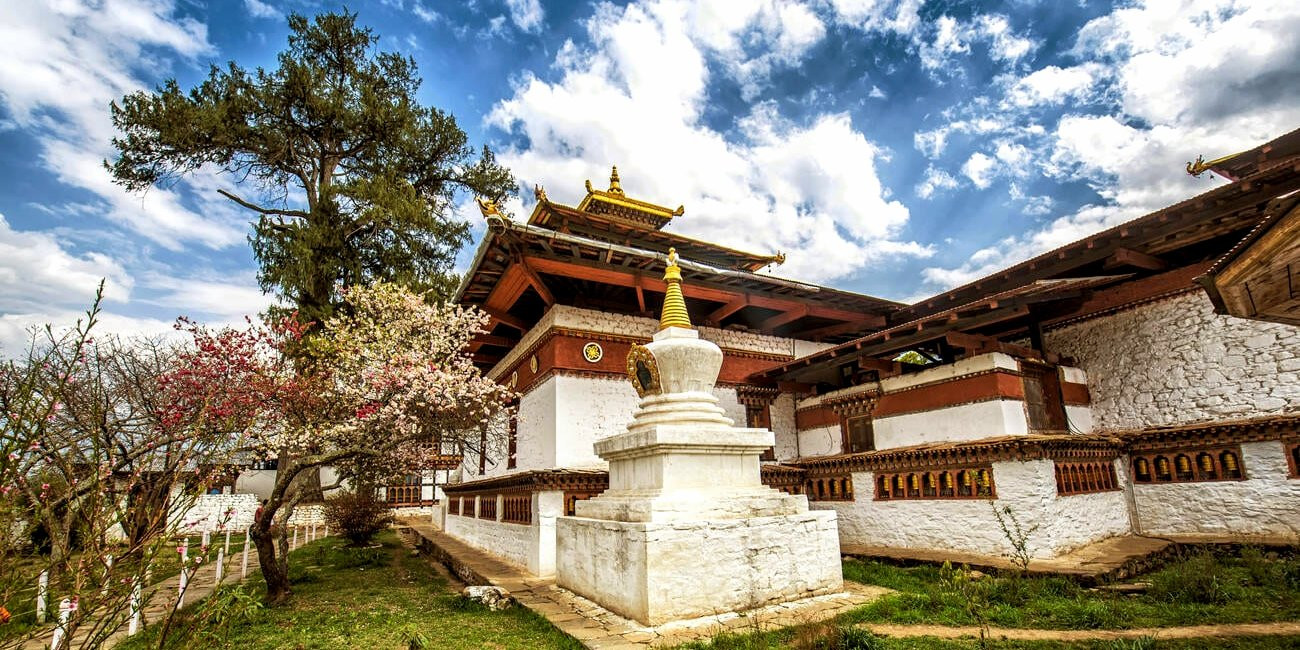
-
Historical Background: Kyichu Lhakhang was originally built in the 7th century by the Tibetan Emperor Songtsen Gampo. It is one of the 108 temples constructed across the Himalayan region to subdue a demoness who was obstructing the spread of Buddhism. This temple, along with Jambay Lhakhang in Bumthang, forms a vital part of Bhutan's religious landscape.
-
Architectural Features: The temple is renowned for its beautiful and ancient structure, characterized by twin temples. The first temple was built by Emperor Songtsen Gampo and houses a revered statue of Jowo Sakyamuni, believed to have been cast at the same time as its famous counterpart in Lhasa. The second temple was added in 1968 by Queen Mother Ashi Kesang Choden Wangchuck, adhering closely to the traditional architectural styles.
-
Religious Significance: Kyichu Lhakhang is considered a pivotal center of spiritual life in Bhutan. It holds several precious relics and is believed to be a place where the physical and spiritual realms meet. The temple is particularly noted for its statue of Jowo Sakyamuni, making it a key place of worship where people come to pray and seek blessings.
-
Cultural Importance: The temple is not only a religious site but also a cultural treasure. It is involved in the annual rituals that define Bhutanese cultural and religious life. During local festivals, the temple becomes a hub of activity with traditional dances and ceremonial offerings, reflecting the vibrant living culture of Bhutan.
-
Visiting Kyichu Lhakhang: Visitors to Kyichu Lhakhang are often struck by its peaceful environment and the palpable sense of history that pervades the site. It offers a unique opportunity to witness the daily rites of Buddhist monks, observe traditional Bhutanese spiritual practices, and soak in the tranquil atmosphere. The temple also serves as a stunning photographic subject due to its historical architecture and the scenic beauty of its surroundings.
Kyichu Lhakhang remains a key destination for those interested in Buddhism, Bhutanese history, or simply looking for a peaceful retreat in one of the most spiritually resonant places in Bhutan.
Chele La Pass
Chele La Pass, at an elevation of about 3,988 meters (13,083 feet), is one of the highest motorable passes in Bhutan, providing a scenic route between the valleys of Paro and Haa. Known for its breathtaking panoramic views, it is a popular destination for both tourists and locals, offering a unique blend of natural beauty and spiritual significance.
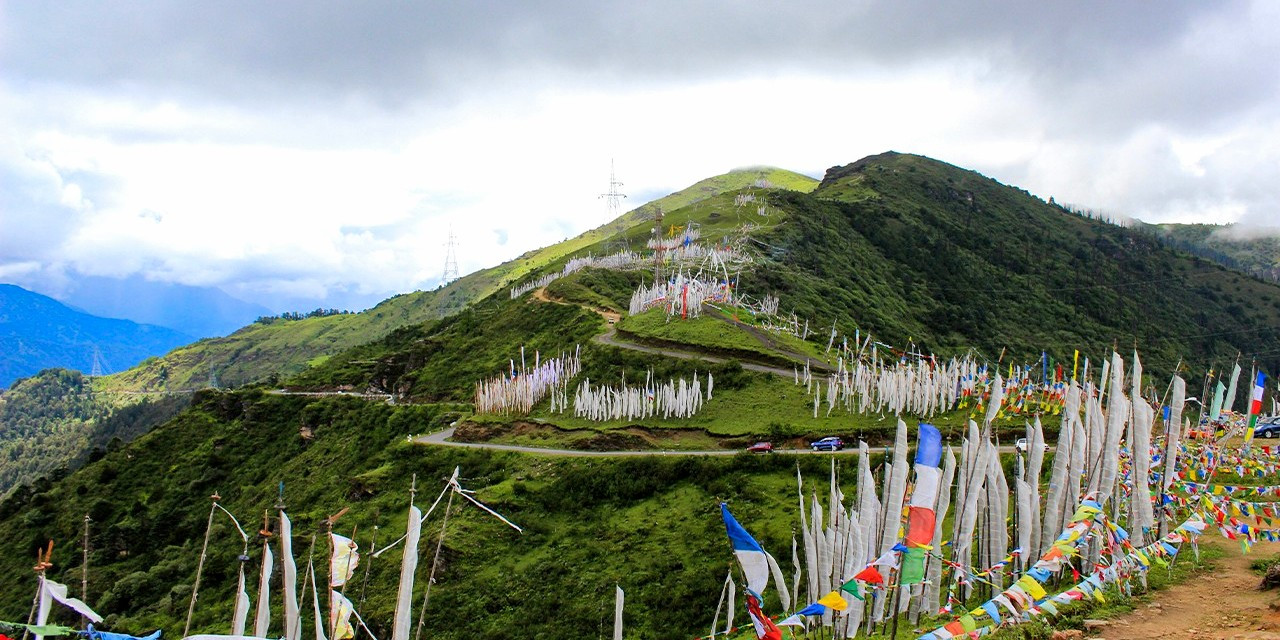
-
Scenic and Natural Beauty: The drive to Chele La Pass itself is a mesmerizing journey, winding through dense spruce and larch forests before emerging into a more open landscape adorned with colorful prayer flags that flutter in the wind. On clear days, the pass offers unparalleled views of the sacred mountain Jomolhari and other Himalayan peaks. The area around the pass blooms with a variety of flora, including rhododendrons and other wildflowers in the spring, making it a vibrant spectacle.
-
Outdoor Activities: Chele La Pass is a haven for nature lovers and adventure enthusiasts. It serves as a starting point for several treks, including the popular hike to Kila Gompa, an ancient nunnery nestled in the cliffs below the pass. The pass is also ideal for bird watching, with numerous species, including the rare blood pheasant, inhabiting the area. During winter, the landscape transforms into a serene snowy expanse, offering opportunities for snow photography.
-
Cultural Significance: The pass is lined with hundreds of prayer flags, which are believed to carry prayers by the wind to spread goodwill and compassion. This practice reflects the deep spiritual roots of the Bhutanese people and adds a colorful and poignant touch to the landscape. The location is often used for local rituals and offerings, making it a place where cultural and natural elements intertwine beautifully.
-
Visiting Chele La Pass: Visitors to Chele La Pass should be prepared for the high altitude and chilly weather, even during summer months. It is advisable to dress in layers, carry windproof jackets, and bring essentials like water and snacks. The pass is accessible by car, and the journey from Paro takes approximately an hour and a half, depending on road conditions and weather.
Chele La Pass is not just a travel destination but an experience, offering awe-inspiring views, a touch of adventure, and a peaceful escape into nature. It is a must-visit for anyone traveling to Bhutan, promising a memorable part of any journey through this mystical country.
Drukgyel Dzong Ruins
Drukgyel Dzong, located in the scenic Paro Valley of Bhutan, stands as a historic fortress and a testament to the rich military history of the region. Although now in ruins, the Dzong continues to be a significant landmark, offering visitors a glimpse into the past and breathtaking views of the surrounding landscapes, including the sacred mountain Jomolhari.
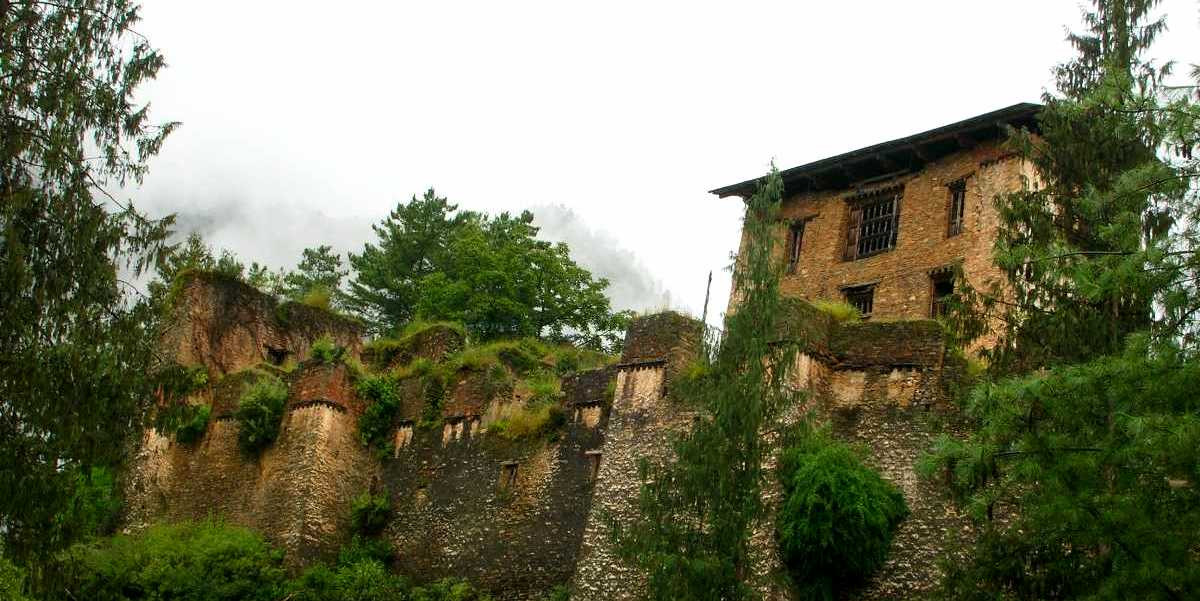
-
Historical Background: Built in 1649 by Tenzin Drukdra at the behest of Zhabdrung Ngawang Namgyal, the founder of Bhutan, Drukgyel Dzong was constructed to commemorate Bhutan's victory over Tibetan invaders. Translated as "Fortress of the Victorious Drukpa," the Dzong served both as a military fortress and a Buddhist monastery. It played a crucial role in defending the Paro Valley from numerous invasions throughout the centuries.
-
The Ruins and Their Significance: The Dzong was largely destroyed by fire in 1951, and what remains today are the haunting yet majestic ruins that still reflect the grandeur of its architecture and the strategic brilliance of its location. The site consists of towering outer walls, remnants of living quarters, and a central utse (watchtower) that provided a vantage point to monitor the region effectively.
-
Restoration Efforts: In recent years, efforts have been made to stabilize and restore the ruins, aiming to preserve this important cultural heritage site. The Bhutanese government, recognizing the historical and touristic value of Drukgyel Dzong, has undertaken these efforts to ensure that future generations can also appreciate its significance.
-
Visiting Drukgyel Dzong: Visitors to Drukgyel Dzong can explore the ruins and enjoy the stunning views of Mount Jomolhari, making it a picturesque spot for photography enthusiasts and history buffs alike. The journey to the Dzong offers a pleasant trek through rice fields and traditional Bhutanese villages, adding to the overall cultural experience.
Exploring the Drukgyel Dzong ruins is a journey back in time and a unique opportunity to witness the architectural and historical grandeur of Bhutan. Its location and the historical narratives associated with it make it a compelling destination for anyone visiting Paro.
Tips for Must See Places in Paro
Visiting Paro, Bhutan, offers a unique experience filled with cultural depth, spiritual significance, and stunning natural beauty. Here are some tips to make the most of your visit to the must-see places in Paro:
-
Plan Ahead for the Tiger's Nest Monastery Hike: The hike to Tiger's Nest Monastery is challenging but rewarding. Start early in the morning to avoid the afternoon sun and crowds. Wear comfortable hiking shoes, bring plenty of water, and pack some snacks. Hiring a guide can enrich the experience with insights into the monastery's history and significance.
-
Respect Local Customs: Bhutan is deeply traditional. Dress modestly, especially when visiting religious sites like monasteries and temples. Always ask permission before taking photographs of people or religious ceremonies.
-
Explore the Rinpung Dzong: Visit Rinpung Dzong in the late afternoon when the light is perfect for photography. Make sure to explore the courtyards and temples inside, and if possible, align your visit with the Paro Tshechu festival to experience traditional mask dances and cultural ceremonies.
-
Visit the Paro National Museum: Allocate enough time to thoroughly explore the Paro National Museum. The exhibits are extensive, ranging from ancient artifacts to detailed explanations of local customs and natural history.
-
Check Out Kyichu Lhakhang: This is one of the oldest temples in Bhutan, so consider hiring a local guide to fully appreciate its history and artifacts. Visit during morning or evening prayers for a more immersive experience.
-
Drive to Chele La Pass: For the best experience, visit Chele La Pass early in the morning to catch the breathtaking sunrise over the mountains. The weather can change quickly, so bring warm clothing and windbreakers.
-
Tour the Drukgyel Dzong Ruins: While at Drukgyel Dzong, take a guided tour to understand its historical importance and enjoy the stunning backdrop of Mt. Jomolhari. Early mornings or late afternoons offer the best light for photographs.
-
Stay Hydrated and Acclimatize: Paro is at a high altitude, so it’s important to acclimatize to the elevation. Drink plenty of water to stay hydrated and take it easy for the first few days.
-
Support Local Businesses: When shopping for souvenirs or dining out, choose local businesses. This supports the local economy and gives you a taste of authentic Bhutanese hospitality and craftsmanship.
-
Prepare for Weather Changes: Weather in Paro can be unpredictable. Pack layers, including a waterproof jacket, to adapt to varying temperatures and sudden rain showers.
Following these tips will help ensure that your visit to Paro is comfortable, respectful, and filled with rich experiences at each must-see location.
Best Time for Must See Places in Paro
The best time to visit the must-see places in Paro, Bhutan, largely depends on what you want to experience during your trip, as well as the weather conditions you prefer. Here’s a breakdown of the seasons to help you plan your visit:
-
Spring (March to May): Spring is one of the best times to visit Paro as the weather is pleasant with moderate temperatures. This season is ideal for hiking and outdoor activities, especially if you're planning to visit the Tiger's Nest Monastery. The landscapes are vibrant with blooming flowers, and the air is fresh and clear. Additionally, the Paro Tshechu, one of Bhutan’s most famous religious festivals, typically occurs in March or April, offering visitors a spectacular cultural experience with traditional dances and ceremonial rituals.
-
Autumn (September to November): Autumn is another excellent time to visit Paro. The weather is stable and dry, providing clear views of the Himalayas. Similar to spring, autumn offers ideal conditions for trekking and visiting outdoor sites like Chele La Pass and Drukgyel Dzong. The fall season also hosts another popular Tshechu festival, where you can immerse yourself in Bhutanese culture against the backdrop of the autumnal hues.
-
Summer (June to August): Summer in Paro is the monsoon season, which brings heavy rains and occasionally foggy conditions. While this might deter some visitors, the rain also enhances the lushness of the valley, making it incredibly picturesque. If you don't mind the rain, you can enjoy fewer tourists and more intimate experiences at major sites. However, some outdoor activities might be limited due to the weather.
-
Winter (December to February): Winter in Paro can be cold, but it’s generally sunny and clear, providing magnificent views of snow-capped mountains. It's a great time for cultural visits and for those who prefer to avoid the larger crowds of the peak seasons. The temperatures can be quite chilly, especially in January, so it’s important to pack warm clothing. Winter treks are possible, but it is essential to be prepared for colder conditions.
Overall, the best times to visit Paro for the most favorable weather and cultural experiences are during the spring and autumn months. These seasons provide the best conditions for both sightseeing and participation in outdoor activities.
Paro is a treasure trove of cultural and natural beauty, offering everything from the spiritual journey to the Tiger's Nest Monastery to the historical depth of Rinpung Dzong. Each site provides a unique glimpse into Bhutan's rich heritage and stunning landscapes. Ideal visit times in spring and autumn showcase vibrant festivals and clear, scenic views. Paro is more than just a destination; it’s an experience that connects visitors with the profound spiritual and cultural essence of Bhutan. Whether seeking adventure, tranquility, or cultural insight, Paro promises an enriching and memorable journey.
FAQs for Must See Places in Paro
Q: What is the best time to visit Paro, Bhutan?
A: The best times to visit Paro are during the spring (March to May) and autumn (September to November). These seasons offer pleasant weather, clear skies, and the opportunity to participate in local festivals like the Paro Tshechu.
Q: How difficult is the hike to Tiger's Nest Monastery?
A: The hike to Tiger's Nest Monastery is considered moderate to challenging. It takes about 2 to 3 hours to reach the monastery from the base, involving a steep ascent. Proper footwear and physical preparation are recommended.
Q: Are there entrance fees for the tourist sites in Paro?
A: Yes, most major tourist sites in Paro, including the Tiger's Nest Monastery, Rinpung Dzong, and the Paro National Museum, charge an entrance fee. These fees are typically included in tour packages if you are traveling with a tour operator.
Q: What should I wear when visiting religious sites in Paro?
A: When visiting religious sites in Paro, it is advisable to wear modest clothing that covers shoulders and knees. Hats should be removed as a sign of respect when entering temples and dzongs.
Q: Can I take photographs inside the monasteries and museums?
A: Photography is restricted inside most temples, monasteries, and the Paro National Museum. Signs will typically indicate where photography is not allowed. Always ask for permission if unsure.
Q: Is it necessary to hire a guide to tour Paro?
A: While it's not mandatory, hiring a local guide can enhance your experience. Guides provide valuable insights into the history and culture of the area and can help with language barriers.
Q: What are some essential items to pack for a trip to Paro?
A: Essential items to pack include warm clothing (especially from late autumn to early spring), rain gear, comfortable hiking shoes, a sun hat, sunscreen, a water bottle, and any personal medication.
Q: How long should I spend in Paro to see all the major attractions?
A: A minimum of three to four days is recommended to explore the major attractions in Paro comfortably, including a day each for the Tiger's Nest Monastery, exploring Rinpung Dzong and the National Museum, and visiting other sites like Kyichu Lhakhang and Drukgyel Dzong.
Q: Are there facilities for international tourists in Paro?
A: Paro is well-equipped for international tourists, with facilities including a range of hotels from budget to luxury, restaurants serving both local and international cuisine, and ATMs accepting international cards.
Q: What cultural norms should I be aware of when visiting Paro?
A: Bhutanese culture places a high value on respect and politeness. Speak softly, do not point with your finger (use an open hand instead), and always pass and receive items with both hands as signs of respect.
For the Nepal tour, please click here.
If you are looking for different kinds of Nepal Tours or Trekking Packages, feel free to contact us.
